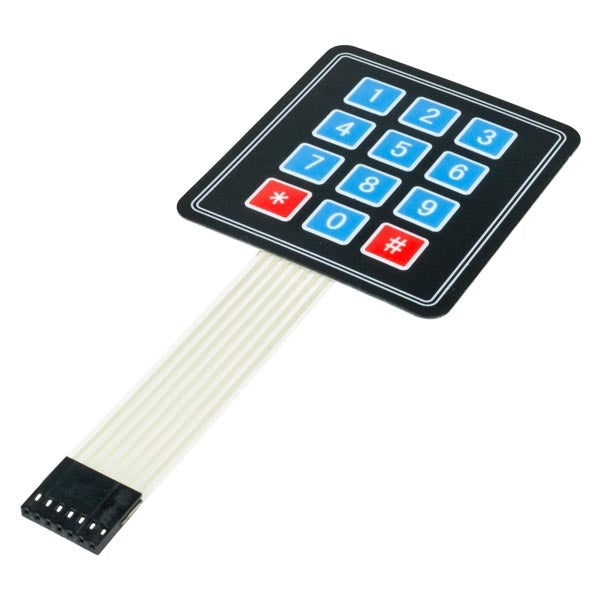Explore the Benefits of Using a Membrane Switch in Modern Devices
Explore the Benefits of Using a Membrane Switch in Modern Devices
Blog Article
Comprehending Membrane Changes: The Secret to Dependable and long lasting Controls

What Are Membrane Switches?
Membrane buttons are an advanced solution in the realm of interface technology, combining capability and design effortlessly. These tools act as an interface between individuals and electronic systems, incorporating numerous components into a small style. Commonly built from adaptable, slim layers of materials, membrane switches are created to respond to touch, allowing individuals to engage with machinery and electronic gadgets efficiently.
The primary components of a membrane layer switch consist of a published circuit layer, visuals overlay, and a spacer layer that protects against unintentional activation. The visuals overlay can be customized to reflect brand name identity or customer preferences, improving appearances while making certain functionality. Membrane buttons are typically made use of in various applications, including clinical tools, consumer electronic devices, and industrial tools, owing to their sturdiness and resistance to environmental variables such as wetness and dirt.
One of the vital advantages of membrane buttons is their ability to endure damage, making them ideal for high-traffic settings. Additionally, they are lightweight and require minimal room, permitting for ingenious designs in product advancement. In general, membrane changes represent a practical and efficient selection for modern digital user interfaces, marrying innovation with user-centric design principles.
How Membrane Switches Job
The procedure of membrane switches rest on a basic yet reliable mechanism that translates individual input into digital signals. These buttons consist of multiple layers, generally consisting of a visuals overlay, a spacer layer, and a circuit layer. When a customer presses the switch, the leading layer warps, enabling a conductive component in the circuit layer to make call with a corresponding conductive pad on the underside of the visuals overlay. This contact shuts the circuit and sends out an electronic signal to the device, suggesting that the button has been activated.
The layout of membrane layer switches can vary, however they typically include domes or tactile elements to provide feedback to the user, improving the general experience - membrane switch. The materials utilized in membrane layer switches, such as polyester or polycarbonate, add to their toughness and resistance to ecological elements, including wetness and dirt. The printed circuits are generally enveloped, which shields them from wear and tear over time.
Benefits of Membrane Layer Switches

Additionally, membrane layer buttons are understood webpage for their durability. Built from durable materials, they are resistant to dirt, wetness, and physical wear, which considerably extends their life expectancy compared to conventional mechanical switches. This toughness makes them specifically ideal for high-traffic environments and applications calling for longevity.
Another considerable benefit is the ease of cleaning and upkeep. The smooth surface of membrane switches minimizes dirt accumulation and is typically invulnerable to spills, making them suitable for settings that need constant sanitization.
Furthermore, membrane layer buttons provide a structured profile, bring about a thinner design that can be integrated into various devices without adding mass. This feature not just enhances the visual charm but likewise adds to an extra ergonomic item layout.
Applications of Membrane Layer Buttons
Versatile and straightforward, membrane layer buttons find applications across a large range of markets, consisting of medical devices, customer electronic devices, and industrial tools. In the clinical area, these buttons are important to tools such as analysis equipment, person surveillance systems, and mixture pumps, where reliability and ease of cleaning are critical. Their ability to endure harsh environments and maintain performance makes them optimal for such applications.

In consumer electronic devices, membrane buttons are used in products like microwaves, washing makers, and push-button controls - membrane switch. Their streamlined layout permits instinctive interface, improving the overall user experience while offering resilience and resistance to tear and wear
Industrial tools also profits from membrane buttons, specifically in control panels for machinery and automation systems. These browse this site buttons use protection against dirt and wetness, guaranteeing constant efficiency in difficult atmospheres. Their adjustable functions permit manufacturers to tailor them to specific operational requirements, boosting performance and functionality.
Picking the Right Membrane Layer Switch
When picking a membrane button, it is necessary to consider different elements that influence performance and viability for specific applications. The key considerations include environmental problems, tactile responses, toughness, and layout specs.
First, assess the operating setting; switches exposed to dampness, chemicals, or severe temperature levels require certain materials to make certain durability and performance. Next off, examine the need for responsive responses. Depending upon user communication, some applications may benefit from a tactile action to validate activation, while others may choose a non-tactile style for aesthetic factors.
Resilience is one more essential variable; membrane buttons ought to be developed to hold up against frequent usage, effects, and abrasion. Make sure the picked button can sustain the expected lifecycle, particularly in high-usage situations.

Final Thought
In conclusion, membrane switches over offer as important components in the design of long lasting and trustworthy control systems across various industries. The versatility of membrane switches permits for tailored services that meet specific operational needs, strengthening their relevance in modern innovation.
Membrane layer switches over stand for a crucial facet of modern-day user interface layout, mixing performance with resilience in numerous applications.Membrane buttons are an advanced solution in the realm of individual interface innovation, incorporating capability and style flawlessly. Typically created from versatile, thin layers of materials, membrane layer buttons are designed to respond to touch, allowing users to communicate with check machinery and digital tools properly.
The layout of membrane buttons can vary, yet they frequently incorporate domes or responsive components to give comments to the individual, enhancing the general experience.In final thought, membrane layer switches serve as crucial components in the layout of reputable and resilient control systems across different sectors.
Report this page